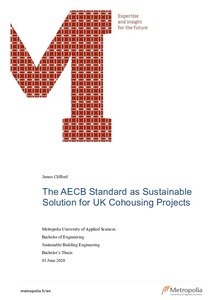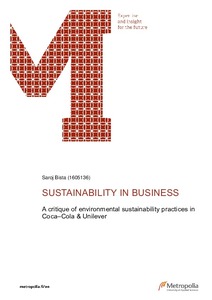The AECB Building Standard as Sustainable Solution for UK Cohousing Projects
Clifford, James (2020)
Clifford, James
2020
All rights reserved. This publication is copyrighted. You may download, display and print it for Your own personal use. Commercial use is prohibited.
Julkaisun pysyvä osoite on
https://urn.fi/URN:NBN:fi:amk-2020060115986
https://urn.fi/URN:NBN:fi:amk-2020060115986
Tiivistelmä
The aim of this thesis was to establish the suitability of the AECB Building Standard as a sustainable building standard for cohousing projects in the UK against the similar low energy building standard, Passive House. To do this, an AECB Building Standard assessment was carried out on a suitable new build cohousing project in Leeds, UK. Design guidance was given and calculations made regarding the efforts required to reach the AECB Building Standard and the suitability for its purpose. Furthermore, comparisons were drawn to the Passive House Standard, a standard that the AECB Building Standard is based on, to establish which is of greater benefit to the end user.
This final year project established that although the AECB Building Standard is an improvement on the existing building standards and regulations in the UK, the Passive House Standard is of greater benefit to the end user. The Passive House Standard was shown to deliver a product with a lower heating demand and more holistically thought out approach than that of the AECB Standard, with minimally increased capital costs.
With the increased cost of Passive House being only a small amount over that of the existing UK building standards, and the level of standard being greater than that of the AECB Standard regarding energy demand. it is clear that the AECB Standard is not a viable competitor to the Passive House Standard for UK cohousing projects.
This final year project established that although the AECB Building Standard is an improvement on the existing building standards and regulations in the UK, the Passive House Standard is of greater benefit to the end user. The Passive House Standard was shown to deliver a product with a lower heating demand and more holistically thought out approach than that of the AECB Standard, with minimally increased capital costs.
With the increased cost of Passive House being only a small amount over that of the existing UK building standards, and the level of standard being greater than that of the AECB Standard regarding energy demand. it is clear that the AECB Standard is not a viable competitor to the Passive House Standard for UK cohousing projects.
Kokoelmat
Samankaltainen aineisto
Näytetään aineisto, joilla on samankaltaisia nimekkeitä, tekijöitä tai asiasanoja.
-
Global sustainability and sustainable know-how in the region of Ostrobothnia : study and assessment of sustainable practices in Ostrobothnian companies
Pernal, Julita (2024)Global sustainability, the concepts of sustainability and challenges of growing sustainably were the main topics of this work. Challenges and opportunities of applications of sustainability concepts for businesses in the ... -
Sustainable Maritime Logistics : Sustainable Innovations and Sustainability Reporting in Finland
Ostrjakova, Jekaterina (2025)As maritime transport plays a vital role in Finland’s international trade, understanding how the industry adapts to sustainability challenges is crucial. This thesis explores how Finnish maritime logistics companies ... -
Sustainability in Business (A critique of environmental sustainability practices in Coca-Cola and Unilever)
Bista, Saroj (2019)The purpose of this paper is to give the reader a clear picture of the importance of sustainability to business, society, and the environment. The author will further discuss how companies can shift their traditional ...



